Titbits and News from the Mare Nostrum
The Antikythera Mechanism: The World's First Analogue Computer
Discovered in a 2000-year-old shipwreck, the Antikythera Mechanism is the world's first known analogue computer. Examine its intricate bronze gears, how it predicted celestial movements, eclipses, and calendars, and its profound impact on understanding ancient Greek ingenuity and lost technology.
By Nick Nutter on 2025-06-30 | Last Updated 2025-06-30 | Titbits and News from the Mare Nostrum
This article has been visited 7,355 times

The Antikythera Mechanism as found on the seabed
A Glimpse into Ancient Genius
The Antikythera Mechanism is a unique example of the advanced scientific and engineering capabilities of the ancient world. Discovered over a century ago, its intricate bronze gears and dials reveal a device far ahead of its time, effectively functioning as the world's first known analogue computer. The complexity of its design and construction remained unparalleled for over a millennium, until the advent of medieval cathedral clocks. This remarkable artifact has impacted our understanding of ancient Greek science and technology, forcing a re-evaluation of historical assumptions regarding their capabilities.
Before the Mechanism's discovery, the level of precision engineering and astronomical calculation it embodies was largely unimaginable for the ancient Greeks. It has revolutionized the perception of their scientific acumen and craftsmanship, revealing a sophisticated tradition of mechanical astronomical displays that was largely lost to history. The sheer gap in complexity between this device and subsequent known mechanical contrivances, spanning approximately a thousand years, suggests either an isolated stroke of genius or, more plausibly, an advanced tradition that subsequently vanished. If such a tradition existed, it necessitates a significant revision of the historical narrative concerning technological development. This raises questions about why this knowledge was not consistently built upon, prompting inquiry into factors such as political upheaval, shifts in demand, or the destruction of intellectual centres. The very existence of this device challenges the notion of a linear progression of technology, highlighting instead the contingent nature of knowledge survival and dissemination.
Do you enjoy my articles? For your reading pleasure, this website does not carry third party ads. You could help me write more articles by buying me a cup of coffee.
Discovery and Historical Context: From Shipwreck to Scientific Marvel
Finding the Antikythera Mechanism
The shipwreck itself has been dated to the first half of the 1st century BC, specifically around 80-70 BC, based on various recovered items such as amphorae, Hellenistic pottery, and Roman ceramics and coins. The vessel was likely a Roman cargo ship, possibly a corbita of approximately 300 tons, constructed from elm wood. The ship's rich and diverse cargo, which included statues dating back to the 4th century BC, suggests it may have been transporting spoils of war from Greece to Italy, potentially related to the Mithridatic wars (89, 87 and 73 BC). The Mechanism's initial appearance as an unrecognizable, "baffling device" and a "corroded lump of metal" underscores the significant challenge researchers faced in identifying its true nature, a mystery that required decades of meticulous effort to slowly unravel. The manufacture of the Antikythera Mechanism is generally dated to around 150 to100 BC, with some estimates ranging broadly from 205 BC to 60 BC. Its sophisticated design points to Hellenistic scientists as its likely creators.
Proposed Origins and Creators
Several potential origins and designers have been proposed:
Rhodes: This island was a prominent centre for astronomy and mechanical engineering. Scholars such as Hipparchus (147 to 127 BC), whose theory for the Moon's motion is incorporated into the Mechanism, and the Stoic philosopher Posidonius (135 to 51 BC) have been suggested as potential designers. The presence of Rhodian-style vases among the ship's cargo further supports this hypothesis.
Corinthian Colonies/Syracuse: The Antikythera Mechanism Research Project proposed that the concept for the mechanism might have originated in Corinthian colonies, particularly Syracuse, the hometown of Archimedes, due to the calendar found on the Metonic Spiral. Ancient literature, notably Cicero's De re publica, describes planetarium-like machines built by Archimedes (287 to 212 BC) that were brought to Rome by Marcus Claudius Marcellus after the siege of Syracuse in 212 BC. While it is improbable that the Antikythera Mechanism itself was one of Archimedes' original devices (as his were in Rome significantly before the shipwreck date), its complexity suggests it emerged from a tradition of such intricate instruments, potentially stemming from Archimedes' school.
Epirus: A 2017 study advanced the idea that while the prototype may have originated in Rhodes, this specific mechanism was modified for a client in Epirus, northwestern Greece. This theory is supported by the consistency of the calendar month names on the mechanism with the Epirote calendar and the inclusion of the local Naa games of Dodona (in Epirus) on the Games dial.
The Mystery of Lost Knowledge
The fact that such a sophisticated device seemingly disappeared from the historical record for a thousand years, with no comparable geared mechanisms known until medieval cathedral clocks, highlights a significant discontinuity in technological development.
This "lost knowledge" is not merely about the absence of the device itself, but the disappearance of the entire engineering tradition that produced it. The discontinuity prompts questions about the fragility of scientific and technical knowledge transmission in ancient societies. Was it due to the decline of specific intellectual centres, political instability, or simply the fact that such devices were rare, expensive, and not widely disseminated or documented?
The existence of this single artifact forces a consideration that the archaeological record might be incomplete, and that other equally advanced devices may have existed but have not survived or been discovered. This perspective suggests that technological progress is not always linear and can be subject to significant setbacks or periods of dormancy depending on socio-political factors. The why of this loss is as crucial as the what was lost. The literary references to Archimedes and Posidonius imply a tradition, not an isolated invention. The discovery of only one such device, despite these references, suggests they were either incredibly rare and precious or that the conditions for their preservation were exceptionally unusual.
The shipwreck, acting as a time capsule, preserved this unique item, indicating that many other marvels might have disintegrated or been recycled. This challenges the common perception of a steady march of progress, emphasizing instead the sometimes accidental and fortuitous nature of technological survival and dissemination.
Anatomy of an Ancient Marvel: Structure and Components


Schematic showing how the mechanism worked
Physical Description and Fragments
The Antikythera Mechanism was originally encased in a wooden box, roughly the size of a shoebox, with approximate dimensions of 34 cm x 18 cm x 9 cm. It was fabricated primarily from bronze sheet. Today, it exists as 82 severely corroded fragments, though it was initially found as a single lump. Four of these fragments contain gears, and many others bear Greek inscriptions. The largest gear measures approximately 13 cm in diameter and originally had 223 teeth. These fragments are now conserved and displayed at the National Archaeological Museum in Athens.
Front and Back Dials
The mechanism featured multiple dials and pointers on both its front and back faces, covered with Greek inscriptions that served as a user's guide and described its astronomical and calendrical purpose.
Front Face: This face displayed a large dial with pointers indicating the positions of the Sun and Moon in the zodiac, along with a corresponding calendar. It also incorporated a half-silvered ball to visually represent lunar phases. An almanac dial, known as the Parapegma, listed the rising and setting times of various stars.
Back Face: This side contained two large spiral dials and three smaller dials. The upper spiral dial represented the Metonic cycle, a 19-year calendar of 235 lunar months, while the lower spiral dial displayed the Saros eclipse cycle, encompassing 223 lunar months. Subsidiary dials included a four-year dial for Panhellenic games, notably the Olympic Games, and possibly the Callippic (76-year) and Exeligmos (54-year) cycles.
Precision Engineering and Miniaturization
The Antikythera Mechanism is a marvel of miniaturization and precision craftsmanship. It contained over 30 gears, with some estimates suggesting up to 37 or even 40. The gears were meticulously fabricated from bronze, with thicknesses ranging from 1.0 mm to 2.7 mm, and stacked in layers with minimal gaps of only 1.4 mm. The gear teeth were typically equilateral triangles with an average circular pitch of 1.6 mm.
This extraordinary level of precision, achieved by hand with tools such as files, drills, and lathes, was unprecedented for its era and was not observed again until the next millennium. The presence of "scientific dials or scales" and "bronze panels... inscribed with what seems to be a user's guide" strongly indicates that the designers intended for this complex device to be operated by a user, not merely to serve as a theoretical model. The existence of a user's guide and clearly labelled dials suggests an intention for practical application and accessibility, even if for a specialized elite. This implies a societal demand for such precise astronomical information beyond mere academic interest, potentially for religious festivals, agricultural planning, or even astrological purposes.
The "user interface" aspect, with its multiple dials and pointers, demonstrates a sophisticated understanding of information display and interaction design, centuries before the emergence of modern concepts of user interface and user experience. The very act of inscribing an instruction manual directly onto the device speaks volumes about the creators' foresight and the anticipated need for guidance in operating such a complex machine. If the Mechanism were merely a "proof of concept" or a "toy," as some contemporary theories propose, the effort invested in a detailed user guide would seem disproportionate. The inscriptions and dial layouts unequivocally point to a functional purpose—a tool designed for active use by a knowledgeable individual or group, such as astronomers, mathematicians, civil engineers, or cartographers.
The design of the dials, with their spiral configurations and multiple pointers, was not solely about calculation but about presenting complex data in an understandable, albeit analogue, format, representing a crucial early step in information technology.
Functionality versus Manufacturing Precision
Despite its intellectual brilliance, the manufacturing precision of the Antikythera Mechanism might not have perfectly matched its theoretical design. While it contained "over 30 gears" and exhibited a "level of miniaturization and the precision of fabrication [that] was not thereafter seen until the next millennium", some analysts suggest that the "looseness inherent in the hand-built gears... would likely have negated the finer solar and lunar correction mechanisms". Furthermore, it has been observed that "its design conception exceeded the engineering precision of its manufacture by a wide margin". A recent digital simulation even suggests that the device "could only be cranked to about four months into the future before it inevitably jammed". This creates a fascinating tension between the theoretical genius and the practical execution. The ancient Greeks possessed the intellectual capacity to design such an intricate system, but their manufacturing capabilities, while remarkable for the era, may have introduced mechanical inaccuracies that limited the device's long-term functional precision. This is not a flaw in the underlying concept but in its physical realization, highlighting that even groundbreaking inventions can be constrained by the limitations of available tools and techniques. This also opens a scholarly discussion: was it a fully accurate, functional tool, or more of a "proof of concept" or educational model?The discrepancy underscores the difference between theoretical models and practical engineering, a challenge that persists in technological development even today. The initial awe inspired by the Mechanism's complexity is thus tempered by later research revealing potential manufacturing imperfections. This does not diminish the ancient genius but offers a more realistic appreciation of the engineering challenges they faced. The idea that "design conception exceeded the engineering precision" is a profound observation, suggesting that the intellectual leap involved in its creation might have been even greater than the physical construction. It also implies that any "jamming" issues observed in modern simulations might be a consequence of the hand-crafted nature and material limitations, further exacerbated by 2000 years of underwater corrosion. This encourages a nuanced understanding that considers both the intended function and the actual performance within the constraints of the time and the ravages of history.
How the Antikythera Mechanism Works


Gearing with pin and slot
Hand-Operated Input
The entire Antikythera Mechanism was hand operated. A hand-turned shaft, now lost, was connected by a crown gear to the main gear wheel. This main gear wheel, in turn, drove the extensive network of other gear trains, with each revolution of the main gear corresponding to one solar year. This input mechanism allowed the user to move the device forward or backward in time, effectively setting a desired date and observing the corresponding celestial positions.
Internal Gearing System
The core functionality of the Antikythera Mechanism resided in its complex arrangement of over 30 to 40 interlocked bronze gear wheels. These intricate gear trains were meticulously designed to calculate the precise ratios required for accurately moving the various display dials. Modern investigative techniques, particularly high-resolution X-ray tomography, have been instrumental in deciphering the internal gearing structure and understanding the complex interactions of these gears.
Advanced Gearing Techniques
The Mechanism employed several advanced gearing techniques, demonstrating mechanical innovations unparalleled for its era: Epicyclic Gearing: This was a critical innovation for modelling the complex, non-uniform motions of celestial bodies, especially the Moon and, hypothetically, the planets. In an epicyclic gear system, the centre of one gear revolves around the centre of another, allowing for the generation of variable speeds and complex orbital paths.
Slot-and-Pin Mechanism: Used in conjunction with epicyclic gearing, this mechanism was ingeniously incorporated to mimic subtle variations in the Moon's motion across the sky, now known as the "first anomaly". This accounts for the Moon's non-uniform speed resulting from its elliptical orbit. The mechanism involved a pin gear driving a slotted gear on eccentric axes, which induced a variation geometrically equivalent to the ancient Greek Epicyclic Theory of the Moon.
Differential Gears: The Antikythera Mechanism is the earliest known device to incorporate a differential gear assembly. This allowed for the calculation of the difference between two inputs, such as the movements of the Sun and Moon, which was essential for accurately displaying the Moon's phases.
Geocentric Cosmology
The Mechanism simulates a geocentric cosmology, which was consistent with the prevailing ancient Greek astronomical understanding. It displays the positions of celestial bodies as observed from Earth. The complex gearing was specifically designed to account for phenomena like the apparent retrograde motion of planets, where they appear to briefly reverse direction against the backdrop of the stars.
Physical Manifestation of Theory
The device acts as a physical manifestation of abstract astronomical theories. It was not enough for the ancient Greeks to merely understand celestial mechanics mathematically; they sought to replicate and predict these phenomena physically. This commitment to the physical modelling of abstract concepts is a hallmark of advanced scientific thought.
The mechanism essentially functions as a "working model of the cosmos", enabling experimentation and visualization of complex celestial phenomena that were otherwise only comprehensible through mathematical calculations. This suggests a pedagogical or demonstrative purpose alongside its predictive capabilities, making abstract theories tangible.
This synergy between theoretical mathematics and astronomy and practical engineering in ancient Greece is evident. The fact that the mechanism physically models Hipparchus's lunar anomaly and the broader epicyclic theories is a critical aspect. It implies a direct transfer of theoretical knowledge from astronomers to skilled mechanicians. This was not simply about constructing a clock; it was about building a scientific instrument that embodied and, in a sense, tested a cosmological model. This level of interdisciplinary application, combining astronomy, mathematics, and engineering, is exceptionally rare for the period and points to a highly integrated intellectual environment. It also reflects the Greek philosophical drive to understand and rationalize the universe, translating that understanding into a tangible, predictive tool.
The First Analogue Computer
The consistent description of the Antikythera Mechanism as the "world's oldest known analogue computer" is fundamental to understanding its operation. Unlike modern digital computers that process discrete values, the Antikythera Mechanism utilizes physical quantities—such as rotations and gear ratios—to represent and continuously process information. This demonstrates an entirely different paradigm of computation that existed in antiquity, challenging the conventional narrative of computing history, which often begins much later with figures like Babbage or even earlier mechanical calculators from the Renaissance.
The mechanism reveals that the concept of automated calculation for complex problems is deeply ancient, even if the methodology was analogue and mechanical. This discovery pushes the origins of "computing" back by millennia. The term "analogue computer" is not merely a label; it defines its fundamental operational principle. While not "programmable" in the modern sense, its fixed gear ratios perform specific, pre-determined calculations. The continuous nature of its operation, where turning a crank smoothly translates into continuous movement of pointers, is characteristic of analogue computation. This reveals that the ancient Greeks were not only skilled craftsmen but also conceptual innovators in the realm of information processing, utilizing the physical world to model and solve complex mathematical problems. This understanding redefines the very timeline of computational thought.
Predicting the Cosmos: What the Antikythera Mechanism Predicted


Side view of a modern reproduction
The Antikythera Mechanism was a sophisticated astronomical calculator, designed to predict a wide array of celestial phenomena and calendrical cycles.
Solar and Lunar Positions
The front face of the mechanism featured a large dial with pointers that clearly showed the positions of the Sun and the Moon against the backdrop of the zodiac. This allowed users to determine their celestial longitudes at any given time. A particularly ingenious feature on the front dial was a half-silvered (or half pale and half dark) ball that rotated to display the current phase of the Moon. This was achieved using a differential gear assembly, where the ball rotated at a rate representing the difference between the Sun and Moon's movements, thus showing the synodic period. The mechanism's drive train for the Moon's position was described as "extremely sophisticated". It incorporated epicyclic gearing and a slot-and-pin mechanism to accurately mimic the subtle variations in the Moon's motion across the sky, known as the "first anomaly". This accounted for the Moon's non-uniform speed due to its elliptical orbit, a concept studied by the astronomer Hipparchus (190 to 120 BC).
Calendrical Cycles
The large upper spiral dial on the back face of the mechanism displayed the Metonic cycle, a 19-year calendar that consists of 235 lunations or synodic months. This cycle was crucial for aligning lunar months with the solar year and regulating calendars in ancient societies for purposes ranging from agricultural planning to religious festivals. A subsidiary dial, or one implied by inscriptions, indicated the Callippic cycle, which is a 76-year period (four Metonic cycles) used to further refine calendar accuracy by skipping a day to realign solar and lunar timekeeping. Additionally, a four-year dial on the back face showed when various Panhellenic games, including the ancient Olympic Games, were to take place. An extension of the Saros cycle, the Exeligmos cycle, spanning three Saros cycles (approximately 54 years), was also incorporated. This cycle was significant because it accounted for the cumulative eight-hour surplus of each Saros cycle, adding up to a full day after three cycles, allowing for more precise long-term eclipse prediction.
Eclipse Prediction
The large lower spiral dial on the back of the mechanism displayed the Saros cycle, an 18.2-year (223 lunar months) period after which solar and lunar eclipses repeat. This dial featured symbols indicating months during which solar or lunar eclipses were likely to occur. The Mechanism was capable of predicting not only the occurrence of eclipses but also a remarkable array of their characteristics, such as directions of obscuration, magnitude, colour, angular diameter of the Moon, relationship with the Moon's node, and eclipse time. These predictions were based on sophisticated arithmetical models, including the Eclipse Year Model and the Zigzag Model, which accounted for glyph distribution, index letter grouping, and the four-turn spiral of the Saros Dial. The astronomical cycles embedded in the Mechanism, such as the Metonic and Saros cycles, were known to the Greeks from Babylonian sources, indicating a significant cross-cultural transfer of knowledge.
Planetary Motions
While most of the relevant parts are missing, inscriptions on the mechanism strongly suggest that there was originally a display for the positions of the five classical planets known to the Greeks: Mercury, Venus, Mars, Jupiter, and Saturn. The Mechanism was designed to model the apparent retrograde motion of these planets, a perplexing phenomenon where they appear to loop backward against the stars when observed from Earth. This would have required an extraordinarily sophisticated understanding of the heavens and complex gearing to replicate.Interdisciplinary Synthesis and Societal Relevance
The Antikythera Mechanism represents a thorough interdisciplinary synthesis of knowledge. It seamlessly integrates advanced astronomical observations, sophisticated mathematical theories, and precision mechanical engineering. This integration allowed for the physical manifestation of abstract celestial concepts into a functional, predictive tool. The Mechanism's ability to calculate and display complex astronomical phenomena, from lunar phases and solar positions to eclipse predictions and the timing of athletic games, demonstrates a remarkable commitment to understanding and organizing the cosmos. This predictive power would have held immense societal relevance, aiding in agricultural planning, fixing religious festivals, and even interpreting celestial events as omens in an uncertain world.
The device is therefore much more than a mere scientific instrument; it embodies a philosophical drive to comprehend and rationalize the universe, translating that understanding into a tangible, predictive tool that served practical and cultural needs.
Modern Research and Digital Reconstructions: Unlocking Ancient Secrets


Eight fragments to work with
Challenges and Technological Breakthroughs
The Antikythera Mechanism has been the subject of extensive modern research, which has been crucial in deciphering its complex functions. Early efforts to understand its purpose were hampered by the lack of necessary technology, as the machine broke into three pieces upon removal from the sea and further fragmented into 82 smaller parts over the years due to handling.
The advent of modern equipment, particularly high-resolution CT scans and Polynomial Texture Mapping, revolutionized the study of the Mechanism. In 2005, CT scans revealed previously hidden inscriptions on the back plate, which were identified as a user manual. These scans also uncovered new scale divisions and thousands of new text characters invisible to the naked eye or earlier 2D X-rays. Reflectance Transformation Imaging combines multiple digital images lit from different directions to reveal fine surface details and enhance character recognition.
Key Researchers and Contributions
Several key researchers have made significant contributions to understanding the Mechanism:
Derek de Solla Price: Price made crucial early discoveries, including that the 19-year Metonic cycle could be calculated using the Mechanism's gearing.
Michael Wright: Inspired by the findings, Michael Wright, a former curator of mechanical engineering, used X-rays in 1990 to determine how the fragments originally fit together. He proposed an extensive epicyclic system, used by the Greeks to explain the planets' complex motions, mounted on the main drive wheel. In 2002, Wright published a groundbreaking planetarium model for the Mechanism that displayed all five anciently known planets, demonstrating how epicyclic theories could be translated into gear trains with pin-and-slot mechanisms to display variable planetary motions.
Tony Freeth: As part of the University College London Antikythera Research Team, mathematician and filmmaker Tony Freeth has been instrumental in solving many of the Mechanism's mysteries. His team built a reconstruction of the device in 2021, effectively making the world's first analogue computer functional again after over 2000 years.
Ongoing Research and Limitations
The ongoing Antikythera Mechanism Research Project continues to yield new findings. For instance, recent studies have used advanced statistical techniques, like Markov Chain Monte Carlo and nested sampling methods (common in gravitational wave research), to analyse incomplete data from the Mechanism. This has led to a stronger likelihood that the calendar ring tracked a lunar calendar of 354 or 355 days, rather than a solar calendar. Other recent digital simulations, however, have suggested that the Mechanism's gears may have frequently malfunctioned, potentially jamming after only a few months of operation due to manufacturing inaccuracies. This suggests that while the theoretical design was brilliant, the precision of its hand-fabrication might have introduced cumulative inaccuracies.
Despite significant advancements, full reconstruction faces challenges and limitations due to the severe corrosion and absence of certain key original parts. The bronze has transformed into brittle atacamite, distorting measurements and making precise determination of original dimensions difficult. Nevertheless, the work of the Antikythera Research Team has greatly advanced the understanding of the device's function and purpose. Freeth emphasizes that the device is unique and "single-handedly rewrites our knowledge of the technology of the ancient Greeks".
The Iterative Nature of Discovery
The study of the Antikythera Mechanism demonstrates the iterative nature of scientific discovery. Initial findings, often based on limited evidence, lead to hypotheses that are then refined or challenged by new data and advanced technologies. The progression from early, fragmented observations to high-resolution CT scans and digital reconstructions illustrates how each layer of investigation builds upon the last, gradually revealing more complete truths. This process highlights that understanding of historical artifacts, much like scientific theories, is not static but evolves with new tools and perspectives. The Mechanism's study also shows how modern technology can bridge the past and present. Techniques developed for contemporary scientific endeavours, such as gravitational wave research, are now applied to ancient artifacts, enabling a deeper understanding of historical engineering and astronomical knowledge. This technological bridge allows researchers to "peer inside" the corroded fragments, effectively bringing the ancient world's ingenuity into the digital age for analysis and reconstruction.
Historical Importance and Legacy: A Tribute to Human Ingenuity


The Antikythera jigsaw
Challenging Historical Perceptions
The Antikythera Mechanism is a unique artifact that seriously challenges conventional perceptions of ancient technology. Before its discovery, the existence of such a complex, geared mechanical device was largely unknown and unexpected for the ancient world, particularly one demonstrating such precision and miniaturization. Its complexity was unparalleled until medieval cathedral clocks, appearing a millennium later. This singular find has compelled a fundamental re-evaluation of the history of science, engineering, and computing.
Implications for Technological History
The Mechanism's implications for the history of technology are vast. It demonstrates that the ancient Greeks possessed not only theoretical astronomical and mathematical knowledge, but also the practical engineering skills to translate these abstract concepts into sophisticated mechanical systems.
The use of differential gears, epicyclic gearing, and pin-and-slot mechanisms predates their re-emergence in Europe by over a thousand years. While other ancient devices like odometers and watermills utilized simpler gears, the Antikythera Mechanism's intricate clockwork-like construction was of an entirely different order of complexity. It is considered the world's oldest known analogue computer because it processed continuously varying data through mechanical means.
This redefines the trajectory of technological progress, suggesting that advanced mechanical computation was achieved far earlier than previously believed. The existence of this device indicates that technological advancement is not always a linear, continuous process, but can be subject to periods of significant innovation followed by periods where that knowledge is lost or dormant.
The "Dark Ages" may not have been as technologically barren as once thought, or the transmission of knowledge may have been more fragile than its initial creation. This forces historians to question not just what ancient civilizations achieved, but how and why such achievements were not consistently built upon.
The Mechanism itself, found in a shipwreck, might symbolize the fragility of knowledge transmission, as a single event could erase centuries of accumulated expertise.
Philosophical Underpinnings
The philosophical drive behind its creation appears rooted in the Greek quest for understanding and rationalizing the cosmos. The Mechanism served as a working model of the universe, allowing users to visualize and predict the complex, seemingly erratic movements of celestial bodies, thereby bringing order and intelligibility to the heavens. This embodies a fundamental aspect of Greek thought: the belief that the universe was ordered and intelligible, and that explanations could be discovered through reason and observation.
A Lasting Mystery
The Antikythera Mechanism remains a lasting mystery, continuing to pose fundamental questions. While it confirms the existence of highly advanced mechanical capabilities in ancient Greece, it also highlights the rarity of such surviving artifacts and the potential for many other marvels to remain undiscovered or lost to time. Its legacy is not just about a single device, but about the ingrained human capacity for ingenuity, the pursuit of scientific understanding, and the complex, often unpredictable, journey of technological development across millennia.
Infographic of the Antikythera Discovery
Interactive Exploration of the Antikythera Mechanism
For Interactive Exploration of the Antikythera Mechanism, Click Here
Credits
Artifact images are copyright to Nick Nutter and taken at the Acropolis Museum in Athens.
Do you enjoy my articles? For your reading pleasure, this website does not carry third party ads. You could help me write more articles by buying me a cup of coffee.
 Dana Island, oldest ancient shipyard
Dana Island, oldest ancient shipyard A Bronze Age Courier Service
A Bronze Age Courier Service Cyrene's Lost Treasures
Cyrene's Lost Treasures The Invisible Enemy
The Invisible Enemy The World's First Company
The World's First Company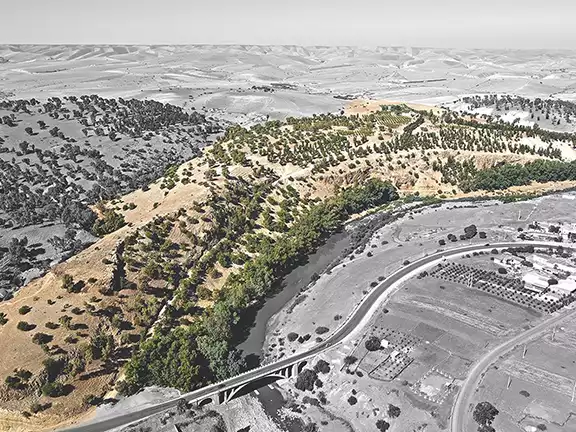 The Copper Age Site of Oued Beht
The Copper Age Site of Oued Beht Kach Kouch and Iberia
Kach Kouch and Iberia Mediterranean Diet Evolution
Mediterranean Diet Evolution Hidden Colours of Ancient Statues
Hidden Colours of Ancient Statues Cleopatra: Egypt's Last Pharaoh
Cleopatra: Egypt's Last Pharaoh Alexandria Library's True Fate
Alexandria Library's True Fate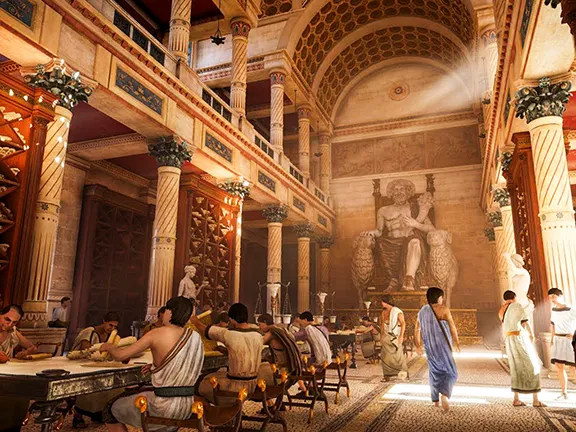 Six Great Ancient Libraries
Six Great Ancient Libraries Ancient Greek Technology
Ancient Greek Technology Broadening Horizons
Broadening Horizons New light on Hadrian
New light on Hadrian The Dolmens of La Lentejuela Teba
The Dolmens of La Lentejuela Teba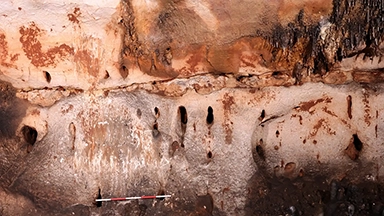 New Cave Art Discovery in Valencia region
New Cave Art Discovery in Valencia region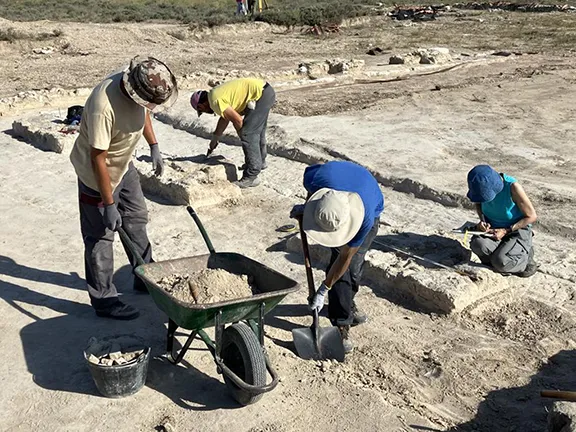 La Cabaneta Oldest Roman Forum in Iberian Peninsula
La Cabaneta Oldest Roman Forum in Iberian Peninsula New Discoveries at Ancient Sunken City of Thonis-Heracleion
New Discoveries at Ancient Sunken City of Thonis-Heracleion Europe's Oldest Shoes Found: 6,000-Year-Old Sandals Woven from Grass
Europe's Oldest Shoes Found: 6,000-Year-Old Sandals Woven from Grass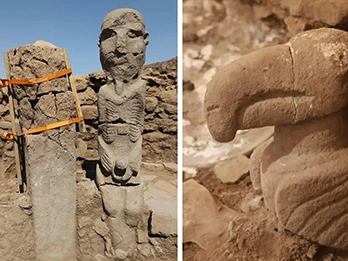 Discoveries at Gobekli Tepe and Karahan
Discoveries at Gobekli Tepe and Karahan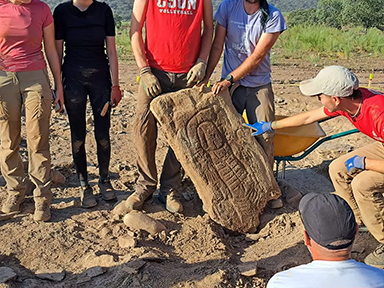 Decorated Stelae found in Canaveral de Leon, Spain
Decorated Stelae found in Canaveral de Leon, Spain The Nebra Sky Disc: A Bronze Age Calendar
The Nebra Sky Disc: A Bronze Age Calendar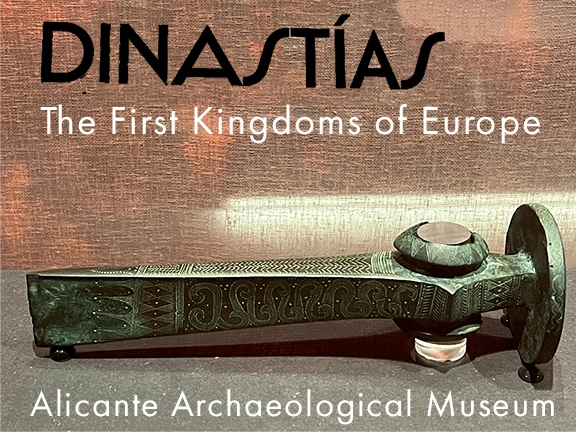 New Exhibition at the Archaeological Museum in Alicante
New Exhibition at the Archaeological Museum in Alicante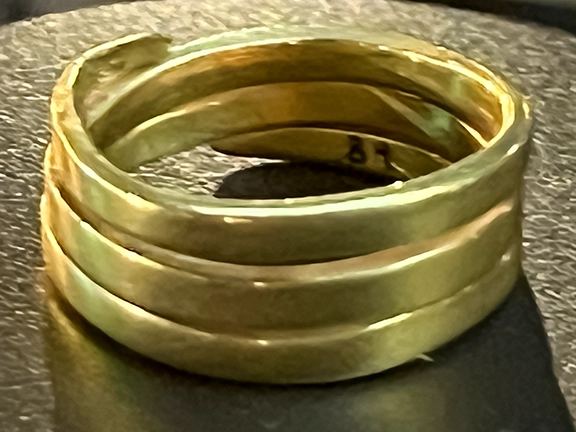 Bronze Age: A Golden Age for Jewellery
Bronze Age: A Golden Age for Jewellery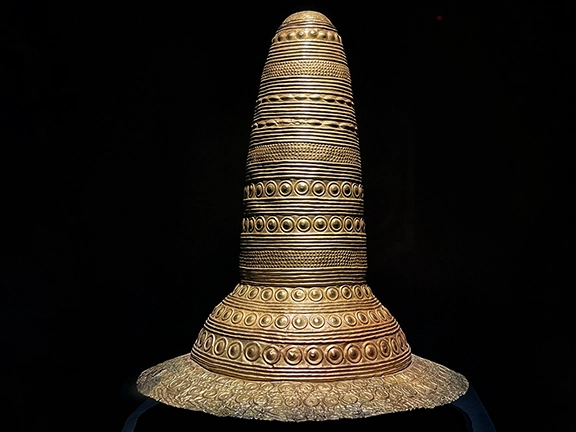 The Golden Hat of Schifferstadt
The Golden Hat of Schifferstadt